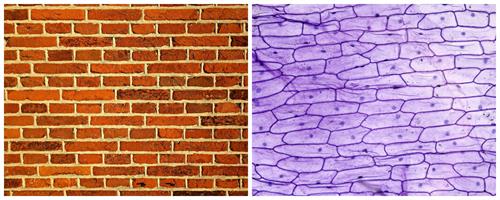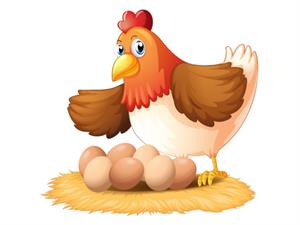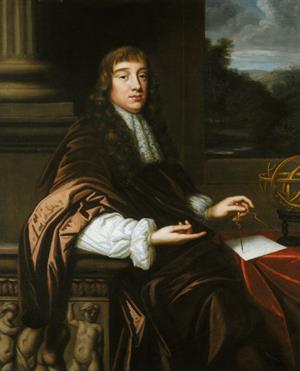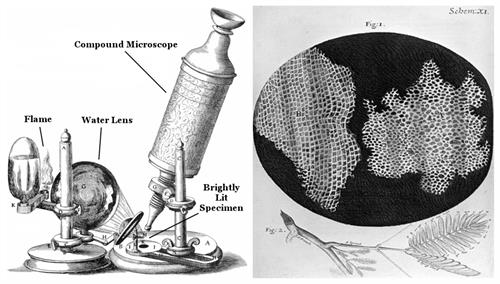PDF chapter test TRY NOW
What are cells?
Living organisms perform certain essential functions such as respiration, digestion and excretion for their survival. All these functions are performed by sets of organs which are formed by structural units known as cells.
The smallest structural and functional unit of living organisms is known as a cell.
The bricks and cells are measured and compared. In general, bricks are structural and functional units of buildings, whereas cells are structural and functional units of living beings. Because, just as bricks are used to construct buildings, cells are arranged to form the body of every organism. Unlike non-living bricks, the cells of live organisms are complex living structures. The body uses the existing cells to create new ones.

Brick wall and cells observed in an onion peel
Important!
The egg of a hen is a single cell that can be seen by the naked eye.

Discovery of cell:
The cells are extremely small in size and can be usually seen only under a microscope of high magnification. Nowadays, an electron microscope is used to magnify the cells and observe the cells.
Robert Hooke first discovered cells in 1665. Robert Hooke, an Englishman, was a scientist, mathematician, and inventor who improved the microscope used in the before times by constructing the compound microscope.

Robert Hooke
Hooke placed, water-lens beside the microscope so that the light from the oil-lamp is focused on the specimens. Through this, the specimens were illuminated, and he could see the minute parts of the objects clearly. Hooke examined a thin slice of cork under the microscope in 1665. During this, he noticed that the cork had partitioned boxes or compartments that appeared like a honey-comb or butterflies wings.

Microscope and the appearance of cork cells under a microscope
He also observed that each box was separated by a partition or a wall and named these boxes as cells.
The cells that were observed by Robert Hooke were actually dead cells.
The cells that were observed by Robert Hooke were actually dead cells.
Based on his observations, he also published a book named Micrographia in \(1665\), where he first used the term Cell. Even though cells were discovered in \(1665\), very little was known about the cell for the next \(150 \) years after Robert Hooke’s observations. But today a lot is known about the cell structure and its functions because of the inventions of microscopes with high magnifications.
In Latin, the word 'cellula' refers to a small chamber. The branch of science that deals with the study of cells is called ‘Cell Biology’.
Reference:
https://en.wikipedia.org/wiki/Robert_Hooke
https://commons.wikimedia.org/wiki/File:Robert_Hooke,_Micrographia,_detail;_microscope_Wellcome_M0005217.jpg
https://commons.wikimedia.org/wiki/File:Robert_Hooke,_Micrographia,_cork._Wellcome_M0010579.jpg
